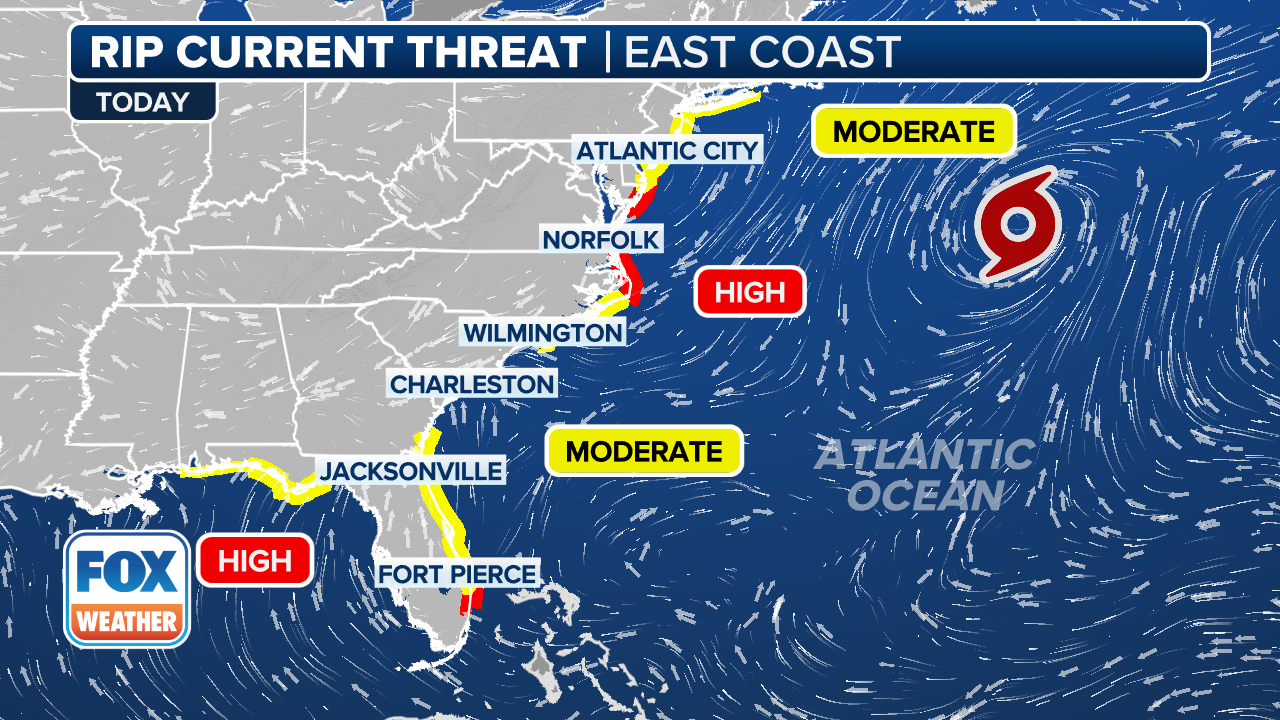Dexter becomes storm-force cyclone as it moves across North Atlantic
Rip currents will pose a serious risk to beachgoers all along the East Coast. Beaches from New York and New Jersey southward to Delaware are seeing a moderate risk on Thursday.
Dexter becomes storm-force cyclone as it zooms away from US
Tropical Storm Dexter became an extratropical cyclone Thursday as it raced away from the U.S. FOX Weather Meteorologists Bob Van Dillen and Stephen Morgan break down the final advisory from the National Hurricane Center on Aug. 7, 2025.
WILMINGTON, N.C. – Tropical Storm Dexter became an extratropical cyclone Thursday as it raced away from the U.S.
The National Hurricane Center (NHC) said in its final advisory on Dexter that the cyclone was still storm-force as it moved across the North Atlantic. This means Dexter is still packing a wallop for shipping interests in the area, but there are no impacts to land.
According to the NHC, Dexter is expected to continue to move off to the east-northeast to northeast over the next few days.
DOWNLOAD THE FREE FOX WEATHER APP

(FOX Weather)
The Atlantic hurricane season runs from June 1 to Nov. 30.
US rip current risk rises as Dexter spins off East Coast
Watch: What is a rip current?
This video explains rip currents and how they form along the shoreline.
Dexter may be moving away from the U.S., but impacts from the fast-moving storm will be felt along the coast.
People from New England southward to South Florida have flocked to beaches to catch some rays and enjoy some time in the water, but dangers lurk below the surface.

(FOX Weather)
Rip currents will pose a serious risk to beachgoers all along the East Coast. Beaches from New York and New Jersey southward to Delaware are seeing a moderate risk on Thursday, while a high rip current risk exists for portions of the Delmarva Peninsula, Virginia, and North Carolina in the mid-Atlantic.
Moderate rip current risks also exist from Georgia to South Florida.
Rip currents are strong, narrow currents that move away from the shore and out to sea at high speeds. They can occur at any beach with breaking waves – not just in the ocean.

